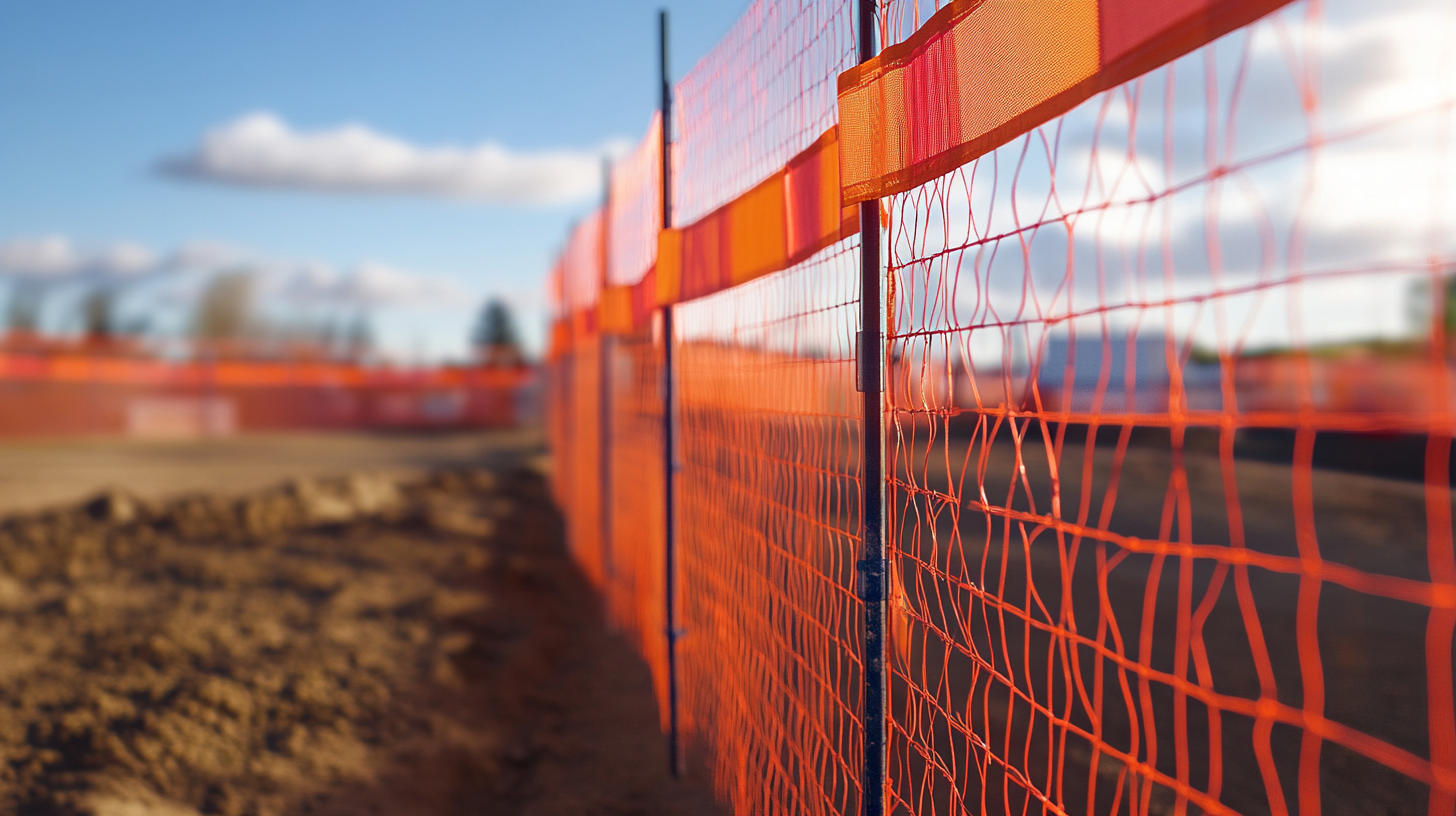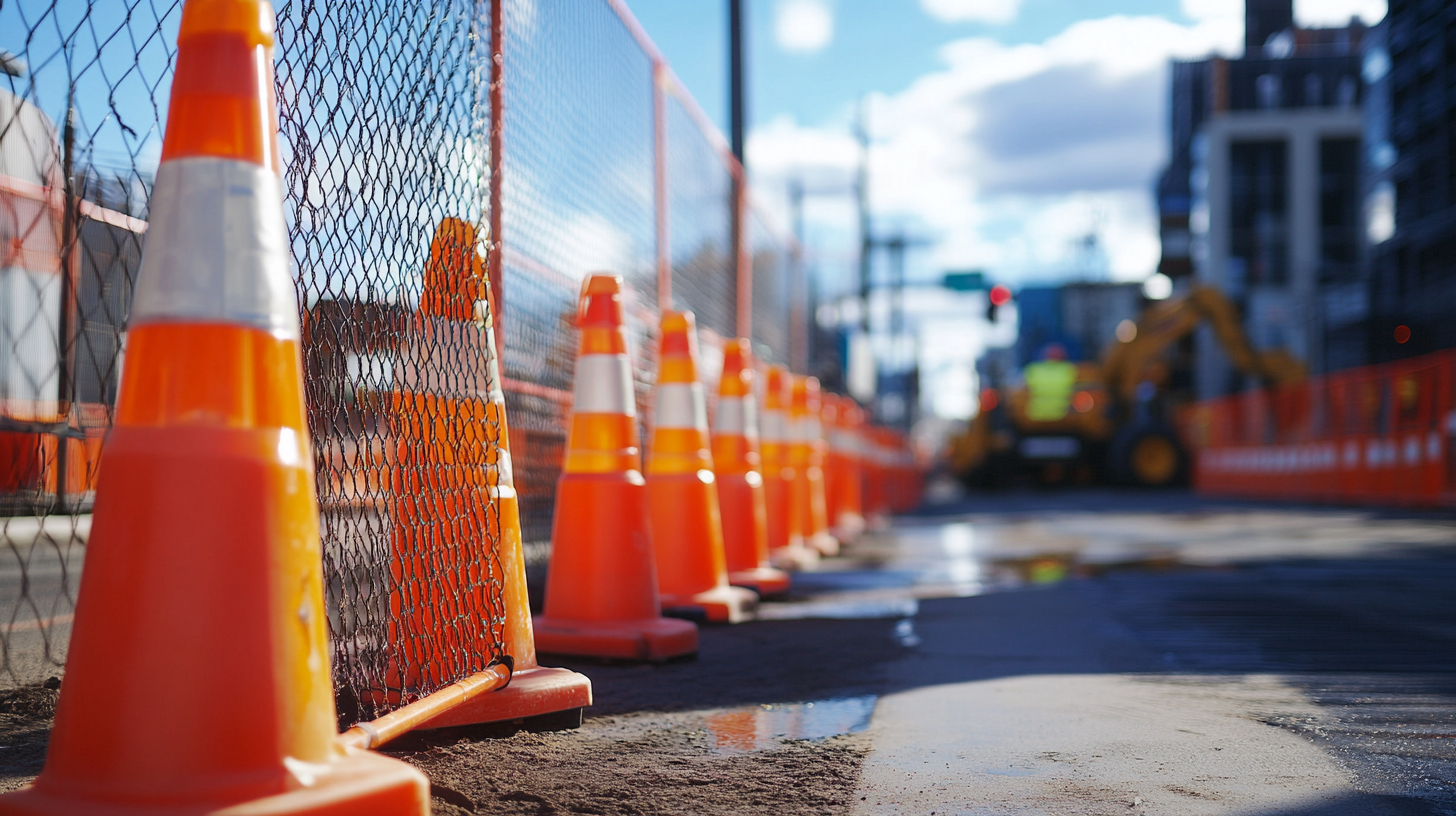Evaluating Temporary Safety Fences Choosing the Best Option for Your Needs
In the construction industry, safety remains a paramount concern, with organizations keenly aware that effective barriers can significantly reduce accident risks on job sites. According to the Occupational Safety and Health Administration (OSHA), approximately 1 in 10 construction workers are injured on the job, underscoring the need for robust protective measures. Temporary safety fences play a crucial role in establishing secure perimeters, safeguarding both personnel and the public from potential hazards. As the demand for safe construction practices rises, the market for temporary safety fences is expected to grow, with a projected increase of 5.5% annually through 2025, as reported by industry specialists. Evaluating various options for temporary safety fences becomes essential for project managers, ensuring compliance with safety regulations while addressing unique site requirements. In this blog, we will explore critical factors in selectivity and how to determine the best temporary safety fence solution tailored to diverse project needs.

Understanding the Importance of Temporary Safety Fences in Various Settings
Temporary safety fences play a crucial role in a variety of settings, ensuring safety in both public and private environments. According to the U.S. Consumer Product Safety Commission, over 2.5 million injuries occur annually due to accidents that temporary barriers could prevent. Whether for construction sites, public events, or residential areas, these fences act as a first line of defense against unauthorized access and potential hazards.
In settings where children are present, such as homes and playgrounds, the importance of effective barriers becomes even more pronounced. A report by the National Center for Injury Prevention and Control states that unintentional injuries are the leading cause of death for children aged 1 to 4. Implementing temporary safety fences can significantly reduce these risks by creating safe zones that safeguard children from potential dangers such as pools or construction zones. With various options available on the market, it is essential to evaluate the specific needs of each setting to choose the most appropriate temporary safety fence.
Key Factors to Consider When Selecting Temporary Safety Fencing
When selecting temporary safety fencing, several key factors must be considered to ensure that it meets both safety standards and practical needs. One crucial aspect is the type of material used. Steel and plastic are common choices, with steel fencing offering greater durability and wind resistance. Reports indicate that high-quality steel temporary fencing can withstand winds of up to 65 mph, making it suitable for various outdoor environments (Construction Safety Reports, 2022).
Another important factor is the height and visibility of the fencing. According to the Occupational Safety and Health Administration (OSHA), barriers should be at least 42 inches tall for effective safety. Additionally, incorporating bright colors or reflective elements can significantly enhance visibility, reducing the likelihood of accidents in low-light conditions. Industry studies have shown that visibility can decrease accident rates by as much as 30% on construction sites (Safety Management Institute, 2023).
Lastly, ease of installation and portability should not be overlooked. Fast set-up times can minimize labor costs, and lightweight materials can be moved easily between job sites. On average, temporary fencing can be erected in under 30 minutes, allowing for greater efficiency in project timelines (Global Construction Insights, 2023). By carefully evaluating these factors, you can choose the most effective temporary safety fencing for your specific needs.

Comparing Different Types of Temporary Safety Fences: Pros and Cons
When it comes to selecting temporary safety fences, it's essential to understand the various types available and their respective advantages and disadvantages. One popular option is chain-link fencing, known for its durability and ease of installation. It's ideal for construction sites where security and visibility are crucial. However, it may not be the best choice for areas that require a more aesthetic appeal, as its industrial look can be off-putting.
Another option is plastic barrier fencing, which is lightweight and easy to transport. This type of fence is often used for crowd control during events. While its visibility and portability are significant advantages, it may not provide the robust security that heavier-duty fences offer. Finally, wire mesh fences strike a balance between visibility and security. They are strong yet versatile, making them suitable for a variety of applications, including road construction and public events. However, installation can be more labor-intensive compared to other options, making it worth considering your specific needs before deciding.
Evaluating Temporary Safety Fences: Pros and Cons
Cost-Effectiveness: Budgeting for Your Temporary Fence Solution
When it comes to selecting a temporary safety fence, cost-effectiveness is often at the forefront of decision-making. According to a report from the American National Standards Institute (ANSI), the average cost of renting temporary fencing can range from $0.50 to $2.00 per linear foot, depending on materials and height. This range suggests that businesses must carefully evaluate their specific needs to avoid overspending. For example, opting for a lightweight mesh fence could be more budget-friendly for short-term projects, while a sturdier chain-link option may be necessary for high-traffic areas or long-duration assignments.
Additionally, businesses should consider hidden costs associated with temporary fencing solutions. Installation fees, delivery charges, and potential damages can inflate overall expenses. A study by the Construction Industry Institute (CII) indicated that project budgets can exceed initial estimates by an average of 15% due to unforeseen logistical challenges. Therefore, it's crucial to not only focus on upfront costs but also to factor in the total expenditure related to your temporary fencing solution. By thoroughly assessing both the options available and the potential hidden costs, businesses can make informed choices that align with their budgetary constraints while ensuring safety and compliance.

Maintenance and Longevity: Ensuring Your Fence Remains Effective Over Time
When it comes to evaluating temporary safety fences, understanding maintenance and longevity is crucial for ensuring that your safety measures remain effective over time. According to a report by the American National Standards Institute (ANSI), regular inspection and maintenance can extend the life of temporary fencing solutions by up to 30%. This means that investing a little time and resources in upkeep can lead to significant cost savings and enhanced safety compliance.
Materials also play a vital role in the longevity of your temporary fence. A study from the International Safety Equipment Association (ISEA) found that fences made from high-tensile steel are not only more durable but also resistant to corrosion, which can be a major threat in outdoor settings. Choosing fences with UV-resistant coatings can further protect against wear and tear caused by prolonged exposure to sunlight, ensuring that your safety measures do not degrade over time.
Additionally, proper installation is a key factor in the lifespan of temporary fences. Research indicates that poorly installed fences can suffer from structural failures, leading to increased repair costs and potential safety hazards. Adhering to industry best practices during installation can significantly enhance the fence's effectiveness and durability, ensuring a long-term solution that protects both people and property.
Evaluating Temporary Safety Fences: Choosing the Best Option for Your Needs
| Fence Type |
Material |
Maintenance Requirements |
Longevity |
Cost |
| Chain Link Fence |
Steel |
Low |
10-15 years |
$3-$5 per foot |
| Plastic Barrier Fence |
Polyethylene |
Very Low |
2-5 years |
$1-$3 per foot |
| Wooden Fence |
Wood |
Medium |
5-10 years |
$5-$10 per foot |
| Vinyl Fence |
PVC |
Low |
20-30 years |
$20-$30 per foot |
| Concrete Barrier |
Concrete |
High |
50+ years |
$25-$40 per foot |

Home
About Us
Products
Customize
Application
Support
Blog
Contact Us


